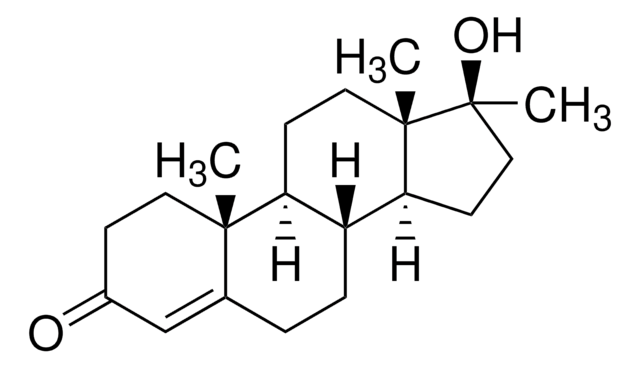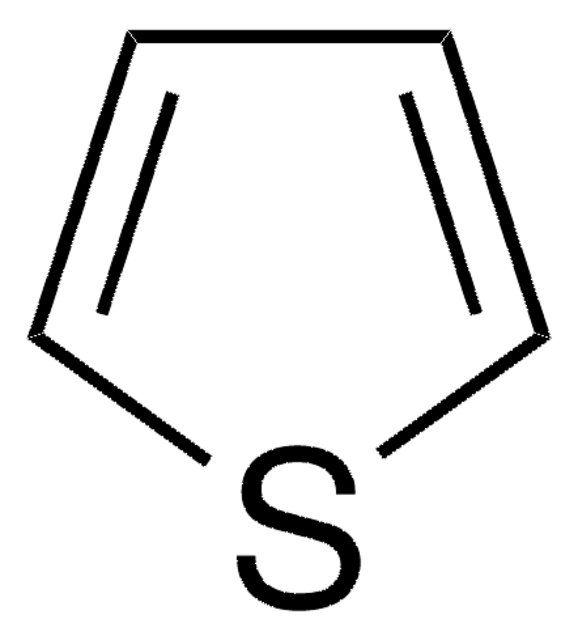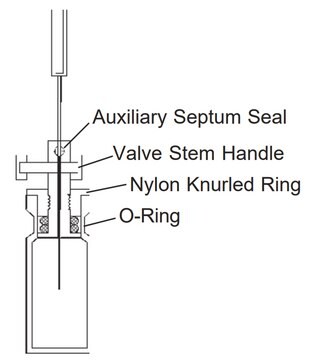Key Documents
68986
Dimethyl disulfide
analytical standard
Synonim(y):
DMDS, Methyl disulfide
About This Item
Polecane produkty
klasa czystości
analytical standard
Poziom jakości
gęstość pary
3.24 (vs air)
ciśnienie pary
22 mmHg ( 20 °C)
Próba
≥98.5% (GC)
temp. samozapłonu
>572 °F
okres trwałości
limited shelf life, expiry date on the label
granice wybuchowości
16 %
metody
HPLC: suitable
gas chromatography (GC): suitable
zanieczyszczenia
≤0.5% water
współczynnik refrakcji
n20/D 1.525 (lit.)
n20/D 1.525-1.529
tw
109 °C (lit.)
mp
−85 °C (lit.)
gęstość
1.046 g/mL at 25 °C (lit.)
Zastosowanie
cleaning products
cosmetics
flavors and fragrances
food and beverages
personal care
format
neat
ciąg SMILES
CSSC
InChI
1S/C2H6S2/c1-3-4-2/h1-2H3
Klucz InChI
WQOXQRCZOLPYPM-UHFFFAOYSA-N
Szukasz podobnych produktów? Odwiedź Przewodnik dotyczący porównywania produktów
Powiązane kategorie
Opis ogólny
Zastosowanie
Hasło ostrzegawcze
Danger
Zwroty wskazujące rodzaj zagrożenia
Zwroty wskazujące środki ostrożności
Klasyfikacja zagrożeń
Acute Tox. 3 Inhalation - Acute Tox. 3 Oral - Aquatic Acute 1 - Aquatic Chronic 1 - Eye Irrit. 2 - Flam. Liq. 2 - Skin Sens. 1 - STOT SE 1 Inhalation - STOT SE 3
Organy docelowe
Central nervous system, Upper respiratory tract
Kod klasy składowania
3 - Flammable liquids
Klasa zagrożenia wodnego (WGK)
WGK 3
Temperatura zapłonu (°F)
59.0 °F - closed cup
Temperatura zapłonu (°C)
15 °C - closed cup
Wybierz jedną z najnowszych wersji:
Masz już ten produkt?
Dokumenty związane z niedawno zakupionymi produktami zostały zamieszczone w Bibliotece dokumentów.
Klienci oglądali również te produkty
Produkty
Various plastics used as barriers to the production of off-flavors in light exposed milk were examined using HS-SPME with a new Carboxen®/PDMS coated Nitinol fiber followed by GC-MS analysis allowing detection of low MW analytes at levels <1 ng/mL.
Protokoły
Separation of 4-Methyl-2-pentanone; Dimethyl disulfide; Hexanal; 3-Methylpentane; Acetone
Separation of Sulfur dioxide; Hydrogen sulfide; Carbonyl sulfide; Methanethiol; Ethanethiol; Dimethyl disulfide; Carbon disulfide
Separation of 2-Ethyl-3-methylpyrazine; 1-Methylpyrrole; 2,3-Dimethylpyrazine; 2,5-Dimethylpyrazine; 2-Ethylpyrazine, ≥98%, FG; 2,3-Diethylpyrazine; 2-Methylpyrazine; Carbon disulfide; Dimethyl disulfide; 2,6-Dimethylpyrazine
Nasz zespół naukowców ma doświadczenie we wszystkich obszarach badań, w tym w naukach przyrodniczych, materiałoznawstwie, syntezie chemicznej, chromatografii, analityce i wielu innych dziedzinach.
Skontaktuj się z zespołem ds. pomocy technicznej














